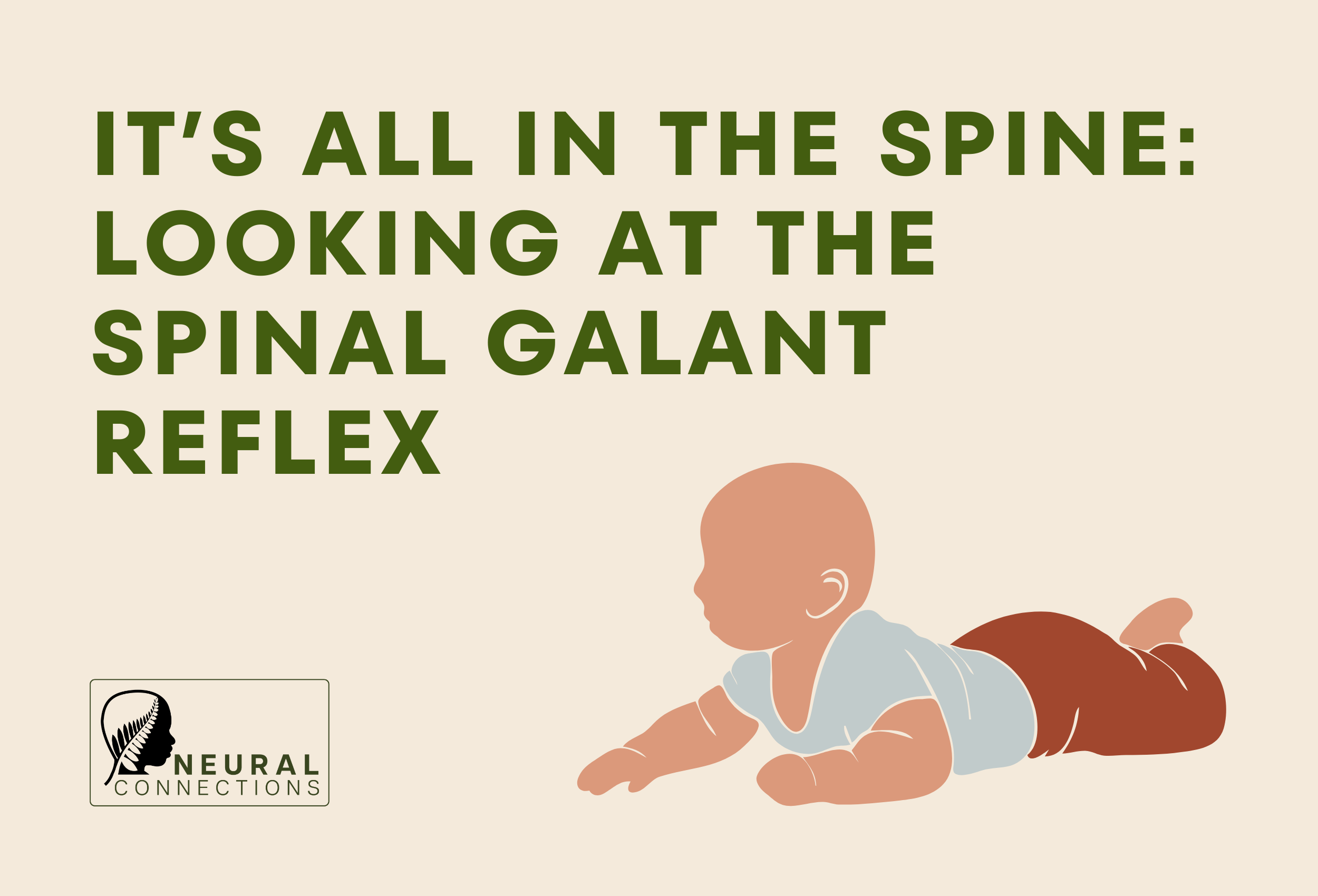It’s All in the Spine: Looking at The Spinal Galant Reflex
In this blog, we cover the spinal galant reflex - and why it is important and the symptoms you can look out for if the reflex is unintegrated in children.
What is the spinal galant reflex?
The spinal galant reflex is a primary/primitive reflex (for a refresh of what primary/primitive reflexes are, click here) that develops in utero at about 20 weeks.
When touch is applied to the side of the spine, the infant's entire body flexes on the same side. The video below shows how the spinal galant reflex is active in this infant:
Why is the spinal galant reflex important?
The video shows that the spinal galant reflex is significant in the movement of the body, and the hips. It plays an important part in the birthing process, as it helps the unborn baby turn their body and hips to travel through the birth canal. It is essential for spine movements, including crawling and walking. It directly impacts future physical and cognitive development like stretching, gross and fine motor skills, academic skills and postural control. The reflex also plays a role in auditory processing and development.
By the time a baby is 3-9 months old, this primary reflex should usually be matured and developed into complex movements. When this reflex is integrated, we should not see the reflex happening as it should not be actively impacting a child’s movement and behaviour.
What happens when the spinal galant reflex is unintegrated?
Sometimes this reflex may remain unintegrated. This can be due to a variety of factors like significant illness during the first year of life, insufficient time on the tummy, or a premature birth among other reasons.
A big sign of this unintegrated reflex is bedwetting accidents that occur in kids who have undergone potty training, especially if they are past the age of 7. In these children, an unintegrated spinal galant reflex may mean that they have not developed proper bladder or bowel control.
Other symptoms of an unintegrated spinal galant reflex include:
Poor physical development, or an abnormal gait;
Poor gross motor coordination, motor programming and control;
Delay in development of cognitive processes: focusing, memorising, thinking
Constantly fidgeting
ADD, ADHD diagnoses or symptoms that affects focus, attention and learning
Discomfort with tight fitting clothing or materials/textures against the skin
How do you tell if a child’s spinal galant reflex is integrated?
While the above symptoms can be a guide to whether this reflex is integrated in a child, it’s often hard to make an assessment as a parent. Increasing tummy time and crawling time for babies is a good way to start to help integrate this reflex. Because each child is unique and different, it’s best to get professional help to observe and assess the reflex.
At Neural Connections, we prioritise work on the reflexes to repattern the brain - this is what creates lasting change. Check in with us for a Discovery Call today.
References
Masgutova, Svetlana & Masgutova, Denis. Parents’ Guide to Masgutova Neurosensorimotor Reflex Integration (MNRI). https://masgutovamethod.com/estore/all/parents-guide-to-mnri
https://ilslearningcorner.com/2016-11-spinal-galant-retained-spinal-galant-make-child-wiggle-squirm/

